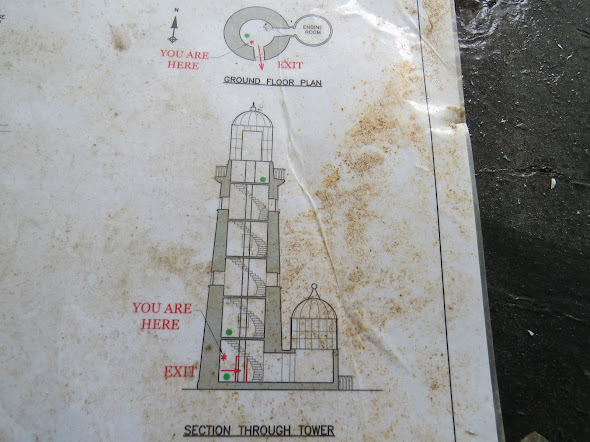Rathlin Island East (Altacarry Head)
Mother and Baby lighthouse, Rathlin East
It is over fifteen years since I first visited Rathlin Island and I am ashamed to say I never really rated the East light, (or lights, I should say). The West light is spectacular and a tremendous feat of engineering and the seabirds on the surrounding cliffs are worth the visit alone. Little Rue Point is the underdog but the wonderful walk out to it, slowly leaving behind all traces of civilisation, is a delight in itself and its position on the water's edge, lord of all it surveys, strikes a chord.
Rathlin East, yes, its a nice enough light, but nothing special. The oldest of the three but nothing remarkable about it...
It took the Association of Lighthouse Keepers trip in October to show me the error of my ways. Of course, it helped that we were given access to the lantern and the balcony. The views in all directions are incredible, to the islands of Scotland and along the cliffs both westward and southward. You could spend hours up there just taking it all in.
The two lighthouses were established at Altacarry Head in 1856, nearly thirty years after the Port of Londonderry first request a light to be established there. Two dwellings and a tower of basalt, with trimmings of the native chalk and a separate lantern at the base were all that was thought necessary at first, but the number of dwellings outhouses expanded over time, particularly when the West light was built. The families of all the keepers, East and West, resided in the East light compound.
The top light was intermittent in character, while the lower light was fixed. The latter was discontinued as long ago as July 1894 and is now used for storing batteries: -
A bare three years after it first shone forth, the East light was visited by the Ballast Board on their fact-finding mission of 1859. The Principal Keeper, who had served at the Fastnet, had a long list of complaints. The machinery was far too complicated for so simple an object; the light had been out of order; the ventilation of the lower light was defective, resulting in the glass clouding over at night; the framework metal was too bright; it was difficult to avoid soiling the glass of the lenses. Worst of all, when the change of currency took place, Irish lightkeepers lost money compared to their English counterparts.
There were three keepers at the station, one of whom was on leave at the time of the inspection. No birds had been killed at the light in the nine months that the PK had been there. There was no fog signal as there was very little fog on Rathlin, he said. An explosive fog signal was later established at the station.
This is the station where Denny Duff blew off his arm in 1912 while firing a salute to a passing pleasure cruiser (another story that I need to re-tell in more detail); where William James accidentally shot fellow keeper Martin Boyle in 1938 while crawling through a hedge to shoot duck; where keeper's wife Mrs Hegarty reared turkeys in the 1940s; and where keeper Walter Coupe was fined £25 in a paternity suit in 1931.
Rathlin was evidently an earlier version of Love Island too, with Irish Lights stations around the country boasting a higher-than-normal percentage of Rathlin Island wives.
The Mull of Kintyre (note the mist rolling in from the sea)
The lights c 1900 (National Library)
Some plans that were located in the base of the tower. I daresay somebody made them for Nigel
















Comments
Post a Comment